By Andrew Mefferd
One of the best reasons to grow tomatoes in a hoophouse or greenhouse is to improve fruit quality. There are a lot of ways that fruit quality can be improved just by going under cover. You can keep off rain, which can cause checking or spots. You can keep the foliage dry, wet foliage being one of the necessary conditions for many of the worst tomato diseases (late blight, I’m looking in your direction). But controlling the amount of water the plant gets is an easy way to improve fruit quality.
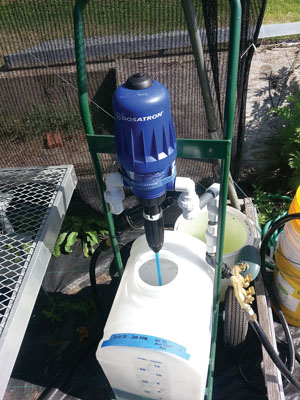 This is a Dosatron rigged up on a dolly so it can be used in multiple locations. The blue football-shaped object to the right attached to the manifold is a DIG9001D irrigation timer.
This is a Dosatron rigged up on a dolly so it can be used in multiple locations. The blue football-shaped object to the right attached to the manifold is a DIG9001D irrigation timer.
One of the perennial banes of tomato growers is split fruit. It’s easy to see after a few days’ rain in a tomato field how the amount of water affects cracking. When it rains a lot and the soil becomes saturated, the tomato plant takes on a lot of water. If the fruit are ripe or close to ripe there is a good chance the skin will crack or the fruit will split open. A tomato’s skin loses its elasticity when it turns red (or whatever the ripe color of the variety is), which is why cracking is the worst on tomatoes that are ripe or near ripe.
One thing you can do if you have problems with cracked fruit is to grow tomatoes under cover. But that doesn’t automatically solve the problem. I’ve seen some hoophouses with pretty bad cracking problems as well. Because you now have the power to decide when it rains in your hoophouse, you have to make sure the way you irrigate supports your management goals. And when I say “make it rain” in the tomato house, I really mean “make the tape drip.” I would never recommend sprinkler irrigation in a tomato house. Pretty much every foliar and fungal disease is made worse by moisture on the foliage and the spike in humidity that follows overhead watering.
The first thing about managing water to improve quality is to break irrigations up into smaller, more regular waterings rather than infrequent, big irrigations. In your greenhouse, you want to do the opposite of a big rainstorm dumping a lot of water all at once. The amount of water to apply on a given day varies widely depending on a lot of factors including soil type, temperature, humidity level, and many other factors. But let’s say that on a given day you know your house needs an hour of water. Why not split that up into four 15-minute waterings? Or two half-hour waterings? If you are having problems with cracking, doing anything to divide the amount of water needed into smaller waterings should improve the situation.
I have had good luck using a DIG 9001D irrigation controller. Because I work away from the farm during the day, I find it very useful to pre-set the irrigation. The workers who are there are going to be busy with many other things and don’t have time to fool around with irrigation. I know from experience and looking at the weather how much water my hoophouses are going to need on a given day. What I do is to use the irrigation controller to split the total amount of water I think the house is going to need on a given day (say, an hour) up into four smaller waterings (four 15-minute waterings in this case). Why four waterings? Well, the DIG 9001D can do a maximum of four separate waterings per day.
There are many other irrigation controllers out there, some of them with more options if you want to split your waterings up even more. I have found is that I can grow even crack-prone heirlooms and varieties like Sungold with almost no cracking at all. I start off with a lower amount of water early in the season when the plants are smaller and need less water and the temperatures are cooler, and increase the amount of water as the season progresses. If I know the day is going to be cool and overcast, I just suspend the irrigation program or reduce the number of irrigations.
Do you need more yield or do you need more flavor? The two are not always mutually exclusive but when it comes to watering, the management strategies for one are at odds with the other. For example, if you want more yield you may water more, to try to fill up more fruit faster. This principle can be applied to the field as well. When we grew more tomatoes outside, and in a hotter state (Pennsylvania), we would set up drip tape on the tomato block but turn it on only when the plants started to show the earliest signs of water stress, when the leaves would start to look limp.
This is a very “rule of thumb” kind of measure, but the principle is clear: less water tends to equal more flavor. More water tends to equal more yield. The year we were farming in Pennsylvania, we only turned on the irrigation once all season long, and our farmers market customers complimented the flavor of our tomatoes many times.
Think of your tomato fruits as balloons. The amount of sugars and flavor compounds in the fruit are determined by the variety and the amount of sunlight the plant gets and how healthy it is. If there is more water in the tomato, the flavors will be more diluted. Since in a greenhouse you can control the amount of water the plant gets, you can prioritize yield by applying more water or prioritize flavor by applying less. The hydroponic equivalent of this is running your nutrient solution at a higher electrical conductivity (EC). A higher EC within the acceptable range will increase flavor and decrease yield.
Even the time of day you harvest can affect this balance. You can add a few percent to your yield totals by picking in the morning, before the plants have begun to respire and lose moisture, when the fruits are as full of water. I try to use the opposite strategy and pick in the afternoon when the fruits may not be quite as heavy but a little more flavorful. This also works for me because I don’t have a heated greenhouse, so my hoophouses tend to have a lot of condensation in the morning. Picking in the afternoon yields drier fruit that will have better shelf life, simply because it will not mold from the blossom or stem end as quickly as it would if packed wet.
Fertigation
One of the challenges to growing a crop over an extended season in a hoophouse or greenhouse is meeting the fertility needs over the entire time the crop is in the ground. Unlike a short crop like lettuce or greens, where there is the opportunity to renovate beds and apply fertilizer between relatively short cropping periods, long-term crops such as tomatoes, cucumbers, peppers and eggplant will be in the ground for a long time.
There is no way to pre-load the bed with enough fertility to meet the crop’s needs for the entire season. If you applied all the nitrogen the crop needs at the beginning, the plants would be way too vegetative. And if you applied the full season’s requirement of potassium at the beginning, it would tie up other nutrients. Even field tomato growers are recommended to fertigate, which means to apply fertilizer through irrigation water.
Once again we see that a big advantage of growing under cover is that you can control how much water gets to your plants. In the past few years, we have gotten into patterns of prolonged rainy springs here in Maine, and it has not been uncommon to see tomatoes in the early summer looking undernourished. We have seen spring rains wash the pre-plant fertility right out of the fields.
Even if you are growing under some type of protected culture, what the rain doesn’t take the plant will. Over the course of a long season in a HH or GH, fruiting crops will deplete what fertility there is in the soil. This is one of the reasons that soil-grown protected culture crops will start to peter out toward the end of the season. Hydroponic culture solves this problem by delivering a small amount of fertilizer in every watering, evenly spoon-feeding the plant the nutrients it needs all season long.
Soil growers have the option to supplement fertility with either side dressing a solid fe rtilizer at the base of the crop, or injecting liquid fertilizer right into the drip lines. The advantage of side dressing is that you can use almost any fertilizer—compost, granular fertilizers or your own custom blend. The disadvantage of side dressing is that it is time consuming to go down each row distributing solid fertilizer. It can also be hard to apply it evenly.
rtilizer at the base of the crop, or injecting liquid fertilizer right into the drip lines. The advantage of side dressing is that you can use almost any fertilizer—compost, granular fertilizers or your own custom blend. The disadvantage of side dressing is that it is time consuming to go down each row distributing solid fertilizer. It can also be hard to apply it evenly.
At right: The proof is in the produce: two flats of crack-prone Cherokee Purple tomatoes grown without any cracks, thanks to careful watering. Photo by Andrew Mefferd.
Another problem with side dressing is that materials applied to the surface of the bed tend to mold in the high humidity, rainless environment of the hoophouse. Incorporating the fertilizer into the soil by scratching it in with a hoe can help. Or, if you use a plastic or biodegradable ground cover, pulling back the drip tape and ground cover, side dressing and then putting the drip tape and ground cover back over the fertilizer can help it stay moist under the ground cover and become available to the crop. But this takes even more time.
In the context of side dressing, the beauty of fertigation is that it takes almost no time. You just mix up your fertilizer solution and let the water take it away. The disadvantage of fertigation is that you are limited to a much smaller number of materials that are completely soluble in water and able to flow through drip tape. Always get assurance from the manufacturer that a product will not clog drip tape before using. The holes in drip tape are very small and easy to stop up with liquid fertilizer with a large particle size.
The piece of equipment that we and a lot of other farmers use with good success for fertigation is a Dosatron. What I like about the Dosatron is that it is calibrated so that if you know the concentration of your solution, you can apply an exact amount of fertilizer. Another useful thing you can do with a Dosatron is to put fertility into the water you are overhead watering transplants with. We use this a lot in the spring after our transplants have used up the nutrients in their potting soil to keep them green.
As equipment goes, the Dosatron is relatively simple, being a water motor that runs and dispenses fertilizer in response to the flow of water going through it. So there are no electrical parts to fail or short out in the wet, humid greenhouse environment. Another nice thing about the Dosatron is that you can either build it into the irrigation system of your greenhouse, or it can be put on a dolly so it can go from place to place if you need it in multiple locations.
Conventional growers have a lot more options when it comes to what will successfully flow through the drip lines for fertigation, since they can use any soluble fertilizer formulation available. Organic growers are limited to naturally occurring non-synthetics, many of which have a larger particle size than the chemical fertilizers. There has been a lot of work done on soluble organic fertilizers recently, and Hort Americas (www.hortamericas.com) is a good place to see what is currently available.
One of the trickiest questions about soil fertility in protected crops is how much to apply? There are established recommendations for most field crops, but it is hard to say how much protected crops with longer seasons need. Soil fertility can be hard to accurately assess since not all of the nutrients in the soil are immediately available.
The best way to tell what the plants need is to do tissue sampling on the crop, which is a service that many of the laboratories that do soil testing will also provide. You take some of the most recently mature leaves off your crop plants and send them into a lab and they will tell you what is actually in the plant’s tissue. It is not that expensive and for anything larger than a very small hoophouse the service pays for itself to know that plants are getting low on a certain nutrient before you see a deficiency. You can actually see the nutrient levels in the plant go down over time as the soil becomes depleted. And that can be priceless for keeping yield and plant health strong late into the season when the plants and soil may otherwise be running out of steam.
Most prices I see are $15-35 per sample, depending on what is being analyzed, this is most useful if done weekly or bi-weekly. You can use it as a one-off test to diagnose a deficiency but it is even more useful to see how the nutrient levels change over time (i.e. generally go down over the course of the season in soil until growers start fertigating or sidedressing). So it adds up but priceless compared to lost production.
Some universities do tissue testing for farmers. A & L Labs, which has several offices to serve the whole country, is another option. You can find more information about tissue analysis on their website as well. (http://www.allabs.com)
Andrew Mefferd is the co-owner with his wife, Ann, of One Drop Farm in Cornville, Maine. He also works as a senior trial technician at Johnny’s Selected Seeds Research Farm. He can be reached at [email protected].

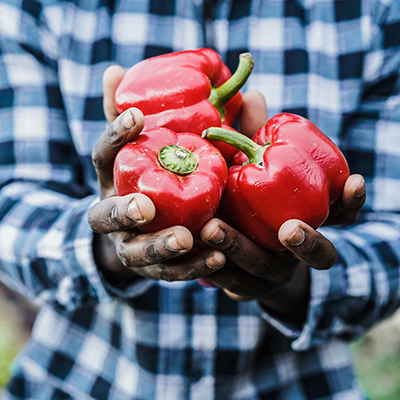
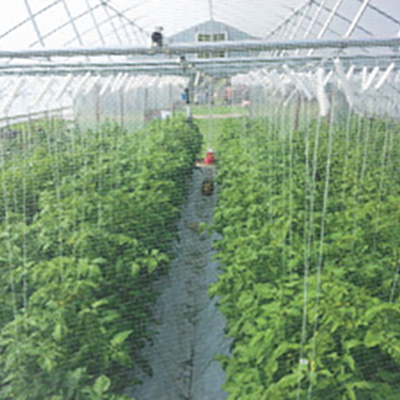

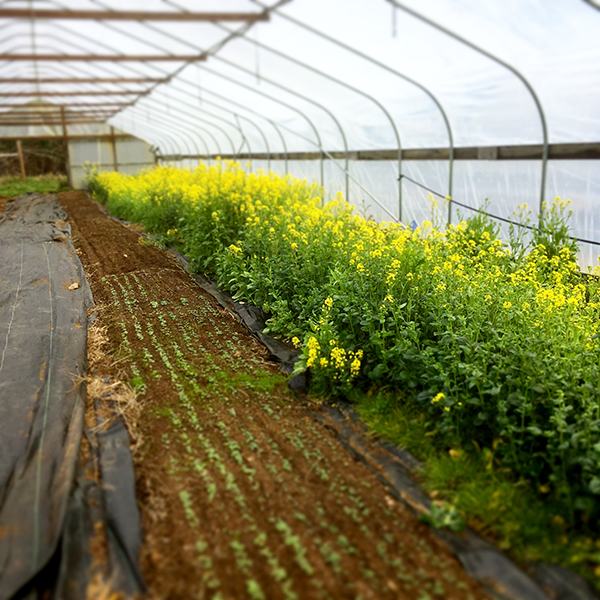 If you’ve been a subscriber to Growing For Market (or even if you haven’t), you’re probably familiar with the many advantages of no-till agriculture. No-till methods can reduce a farm’s carbon footprint, promote complex soil biology, and preserve and build organic matter.
If you’ve been a subscriber to Growing For Market (or even if you haven’t), you’re probably familiar with the many advantages of no-till agriculture. No-till methods can reduce a farm’s carbon footprint, promote complex soil biology, and preserve and build organic matter.
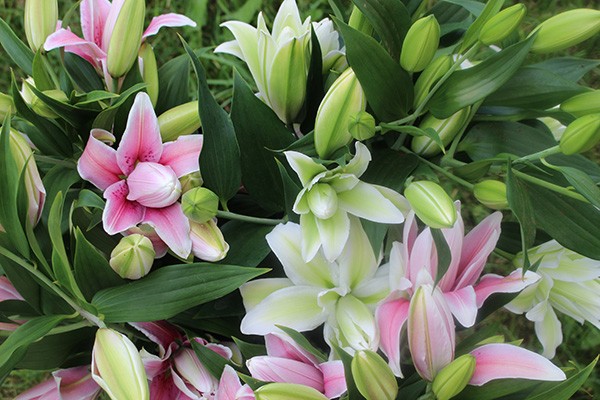 As soon as we start driving our routes in the spring our customers ask us when we’ll have roselilies. They’re that popular and have become a signature crop for us. They’re basically a type of oriental lily, but with multiple layers of petals, and without stamens and pistils (i.e. no pollen!).
As soon as we start driving our routes in the spring our customers ask us when we’ll have roselilies. They’re that popular and have become a signature crop for us. They’re basically a type of oriental lily, but with multiple layers of petals, and without stamens and pistils (i.e. no pollen!). 
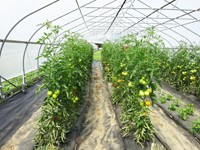

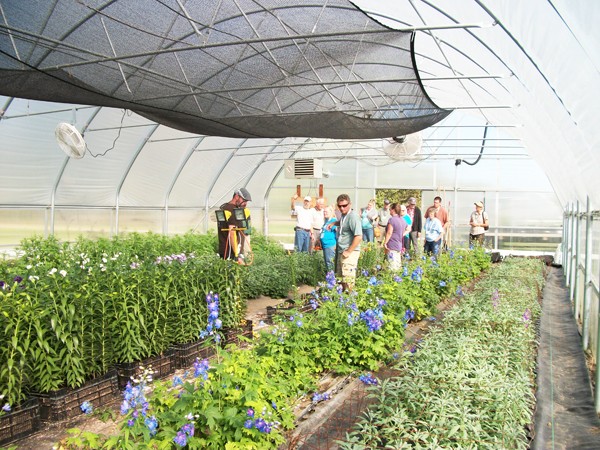 Prairie Garden Farm has been growing cut flowers for florists and studio designers since 2010. As we’re on an exposed hillside in west-central Minnesota, we’re dependent on protected culture to grow quality flowers. This article describes our approach – planning, financial, and operational details - that helps us make the most of our structures.
Prairie Garden Farm has been growing cut flowers for florists and studio designers since 2010. As we’re on an exposed hillside in west-central Minnesota, we’re dependent on protected culture to grow quality flowers. This article describes our approach – planning, financial, and operational details - that helps us make the most of our structures.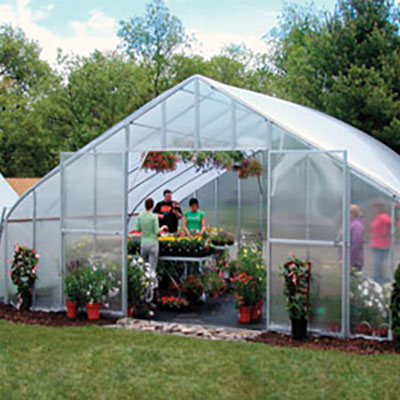
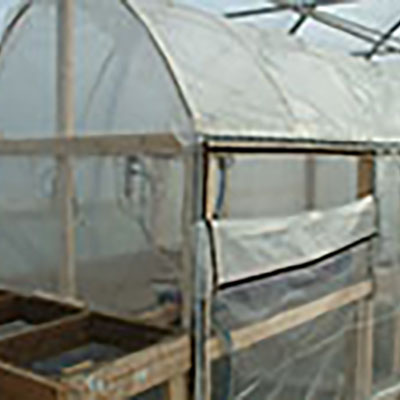
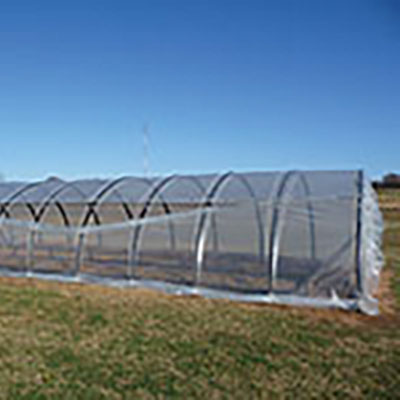

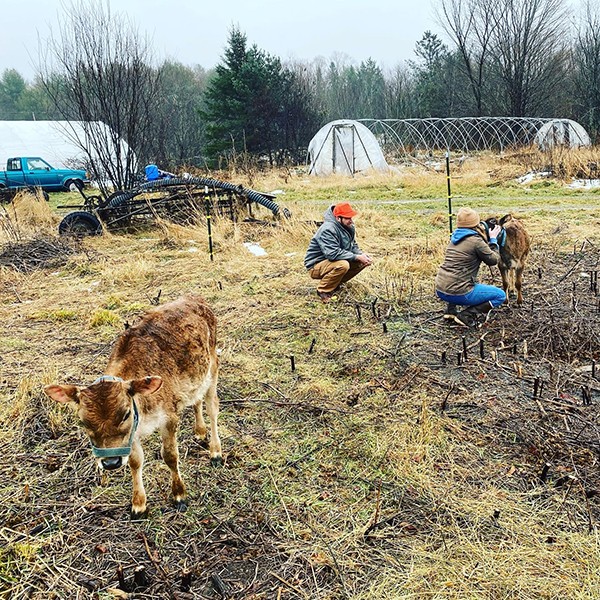 Why two of our hoophouses are named because of Emily
Why two of our hoophouses are named because of Emily
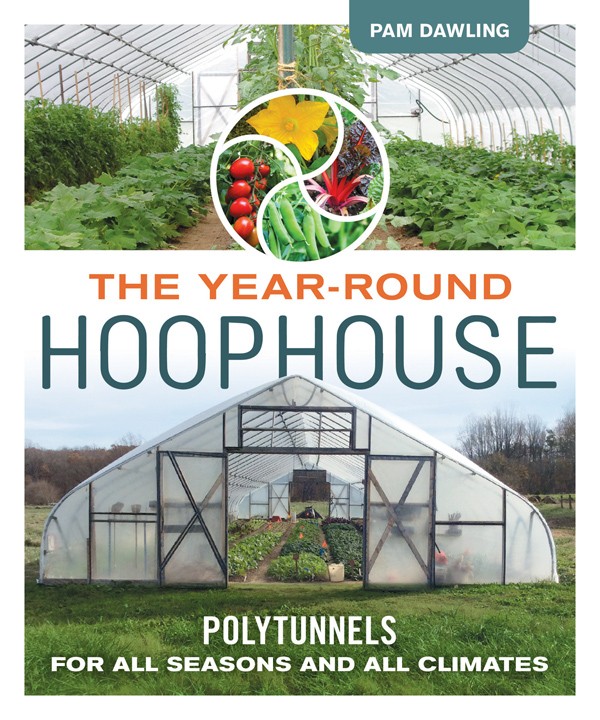 In the hoophouse plants grow bigger and faster. We want to avoid anything that slows growth down. All that growing burns up the organic matter and nutrients in the soil at a fast rate, particularly in hot, humid climates. We need to replenish the soil more generously and more often than we do outdoors. Good soil health means having enough plant nutrients, not surplus. If you have too much soluble nitrogen (N), it can leach into the groundwater or burn up the organic matter. Using manure or compost for a nitrogen source can cause the build-up of excess phosphorus (P).
In the hoophouse plants grow bigger and faster. We want to avoid anything that slows growth down. All that growing burns up the organic matter and nutrients in the soil at a fast rate, particularly in hot, humid climates. We need to replenish the soil more generously and more often than we do outdoors. Good soil health means having enough plant nutrients, not surplus. If you have too much soluble nitrogen (N), it can leach into the groundwater or burn up the organic matter. Using manure or compost for a nitrogen source can cause the build-up of excess phosphorus (P).
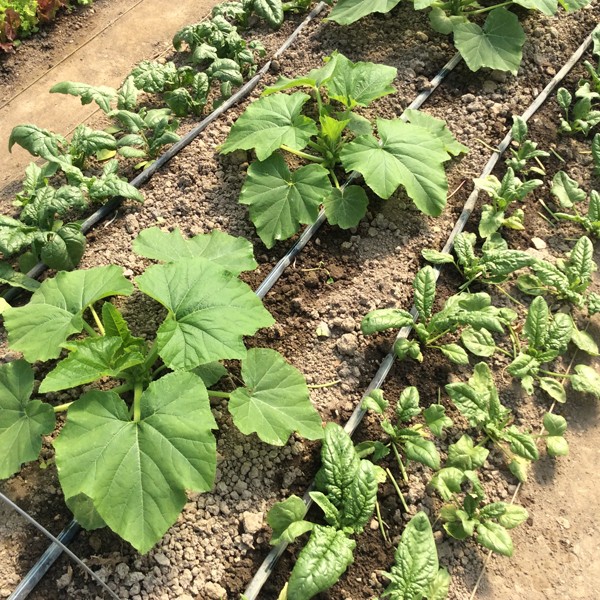 We have three main seasons in our zone 7 central Virginia hoophouse: fall-winter (October to March), spring-early summer (March to July) and high summer (August and September). We grow one bed (90’/27.5 m or so) each of yellow squash and bush cucumbers in the spring-summer season, for reliable early harvests and to help with crop rotation. If you farm in a colder climate than ours, you might be questioning allocating the precious real estate to a crop that so quickly goes from desirable to over-abundant, especially when there are more profitable things to give the space to. One reason is a difference between southern and northern climates.
We have three main seasons in our zone 7 central Virginia hoophouse: fall-winter (October to March), spring-early summer (March to July) and high summer (August and September). We grow one bed (90’/27.5 m or so) each of yellow squash and bush cucumbers in the spring-summer season, for reliable early harvests and to help with crop rotation. If you farm in a colder climate than ours, you might be questioning allocating the precious real estate to a crop that so quickly goes from desirable to over-abundant, especially when there are more profitable things to give the space to. One reason is a difference between southern and northern climates.
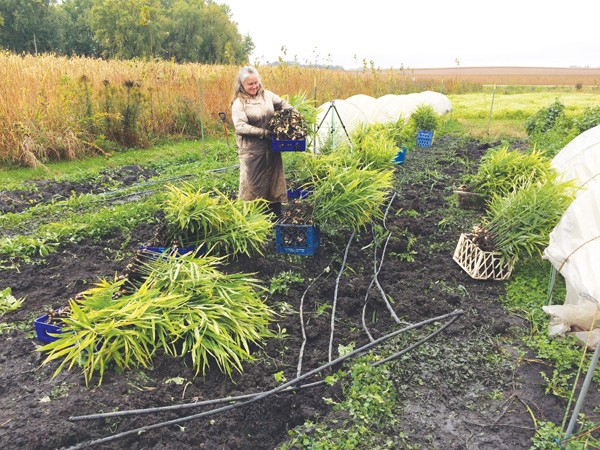 Local and organic ginger is a high-value crop that in the right market can be in high demand. Growing this tropical crop in the Midwest can be a challenge, and thus far, farmers thought they had to own a high tunnel to ensure adequate heat during the variable spring and fall seasons. High tunnel space on most farms is at a premium, so it is expensive space to devote to a long-season crop.
Local and organic ginger is a high-value crop that in the right market can be in high demand. Growing this tropical crop in the Midwest can be a challenge, and thus far, farmers thought they had to own a high tunnel to ensure adequate heat during the variable spring and fall seasons. High tunnel space on most farms is at a premium, so it is expensive space to devote to a long-season crop. 
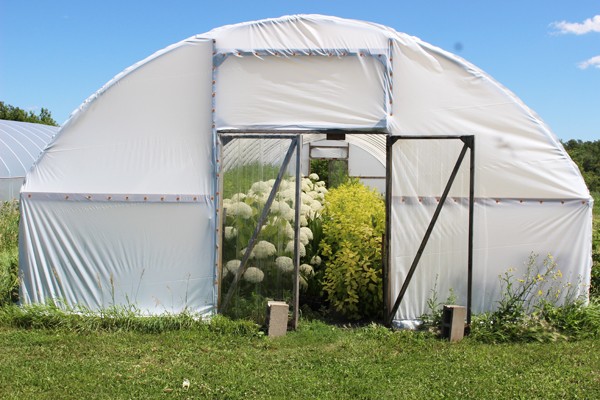 With protected space on the farm at a premium, we have to choose wisely when deciding which crops are worth putting under cover. We start out by deciding what to grow overall, and then deciding how much of that can fit inside structures, by doing a little revenue and profit analysis. Quickbooks is used to record sales, so it’s easy to list sales per item at the end of the year to see what brought in the most revenue. A version of that report extracted to a spreadsheet calculates profit per square foot by first subtracting the costs of plugs or bulbs, and then dividing by the cultivated area for each item.
With protected space on the farm at a premium, we have to choose wisely when deciding which crops are worth putting under cover. We start out by deciding what to grow overall, and then deciding how much of that can fit inside structures, by doing a little revenue and profit analysis. Quickbooks is used to record sales, so it’s easy to list sales per item at the end of the year to see what brought in the most revenue. A version of that report extracted to a spreadsheet calculates profit per square foot by first subtracting the costs of plugs or bulbs, and then dividing by the cultivated area for each item. 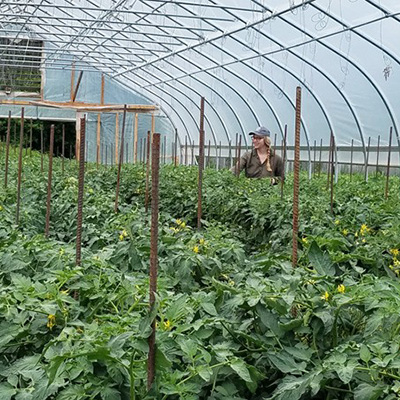
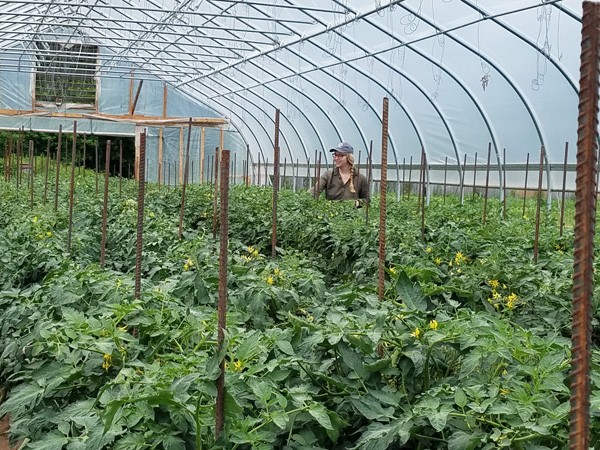 High tunnels have played a crucial role in season extension for market growers, with popularity increasing over the last decade to meet demand for locally grown produce year round (or close to it). Once built, the high tunnel becomes some of the most valuable real estate on the farm and many growers are able to produce exceptional yields in the first few years. After several seasons, yields begin to decline and many growers struggle to maintain productivity.
High tunnels have played a crucial role in season extension for market growers, with popularity increasing over the last decade to meet demand for locally grown produce year round (or close to it). Once built, the high tunnel becomes some of the most valuable real estate on the farm and many growers are able to produce exceptional yields in the first few years. After several seasons, yields begin to decline and many growers struggle to maintain productivity. 